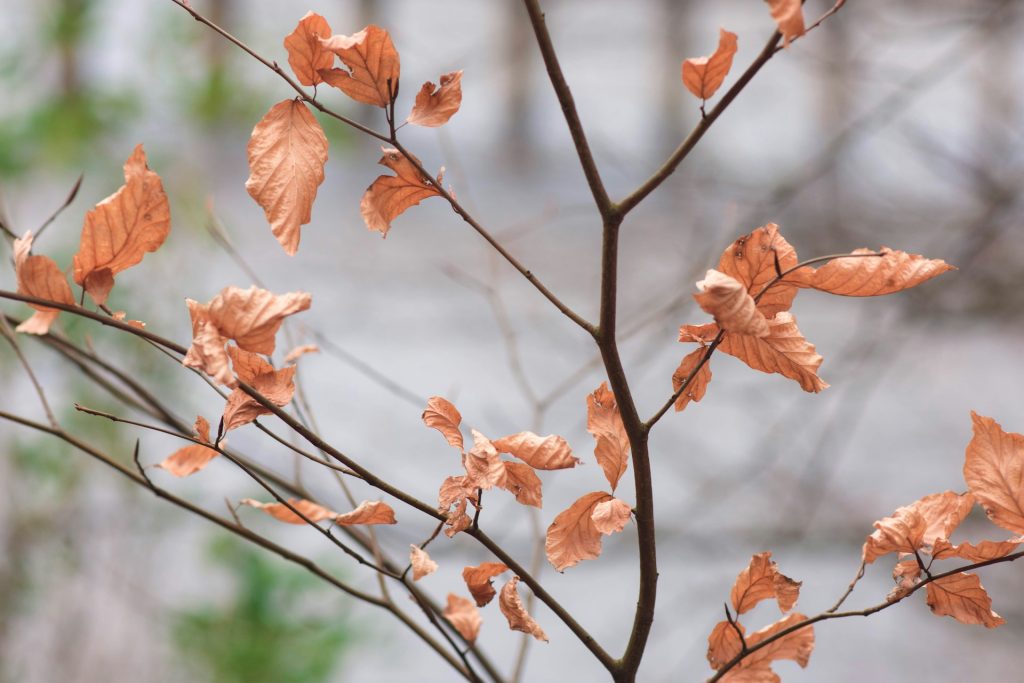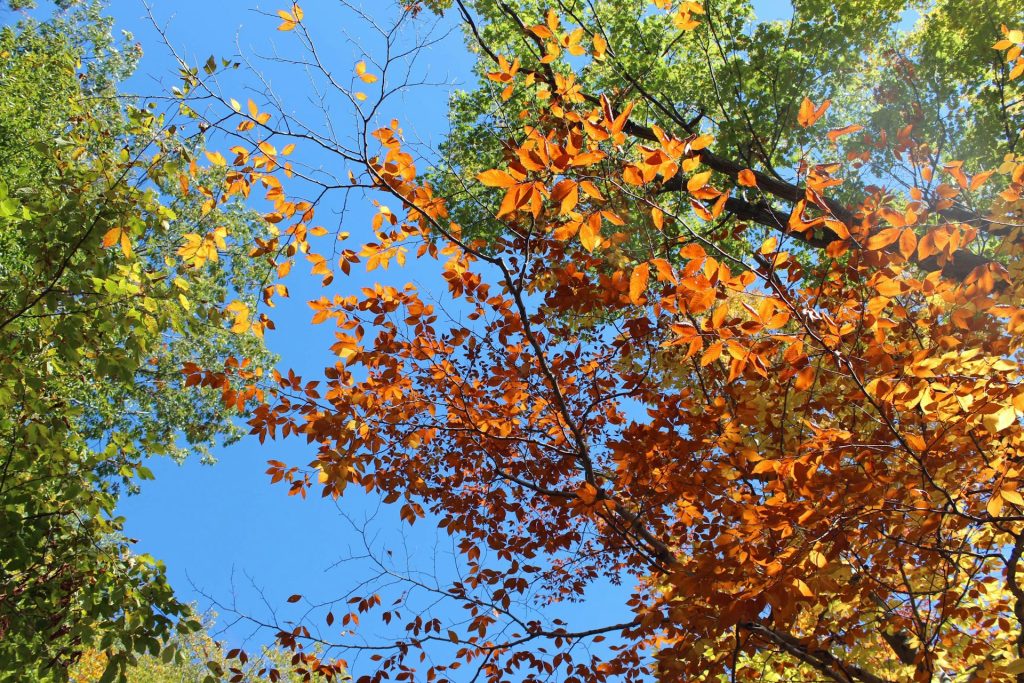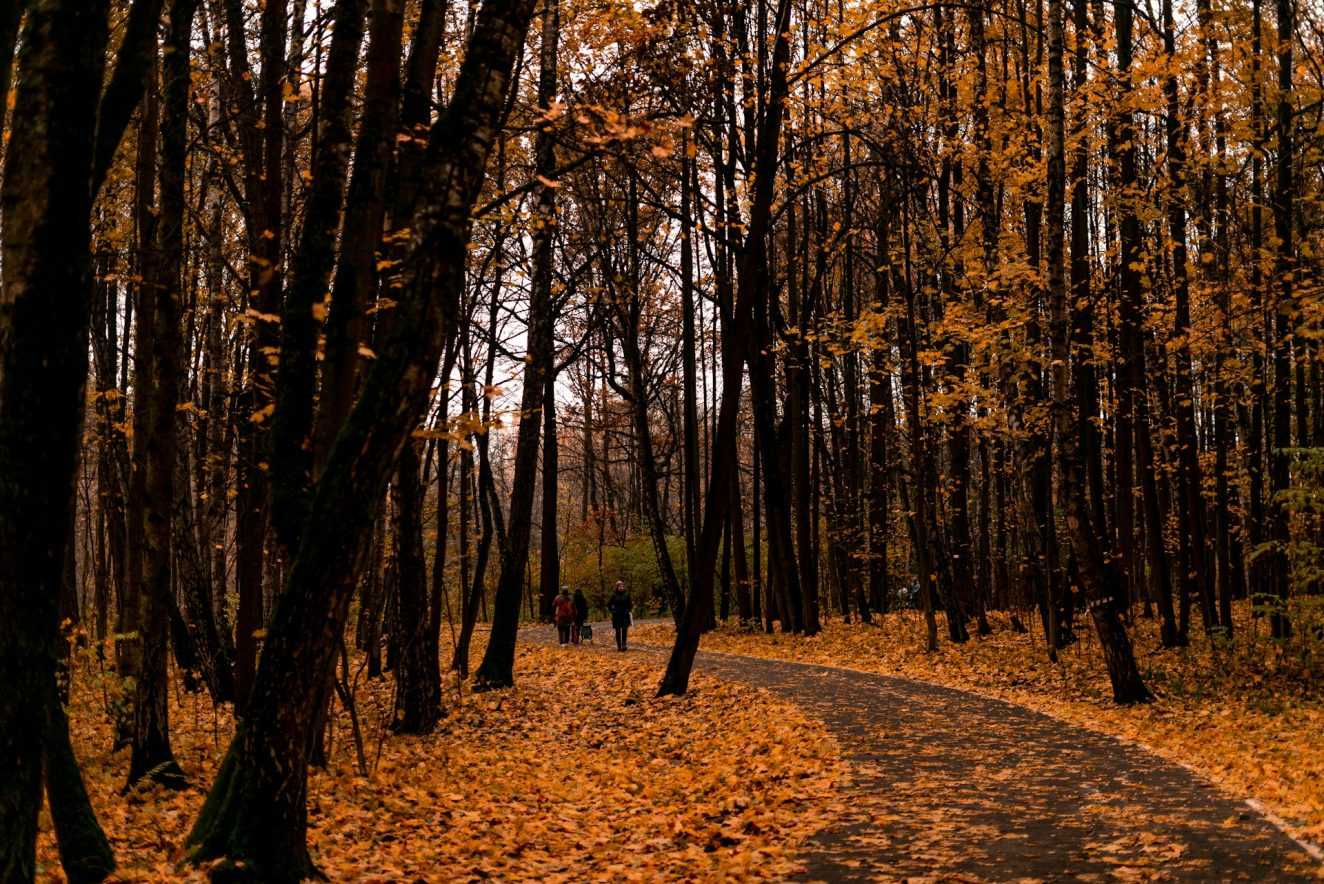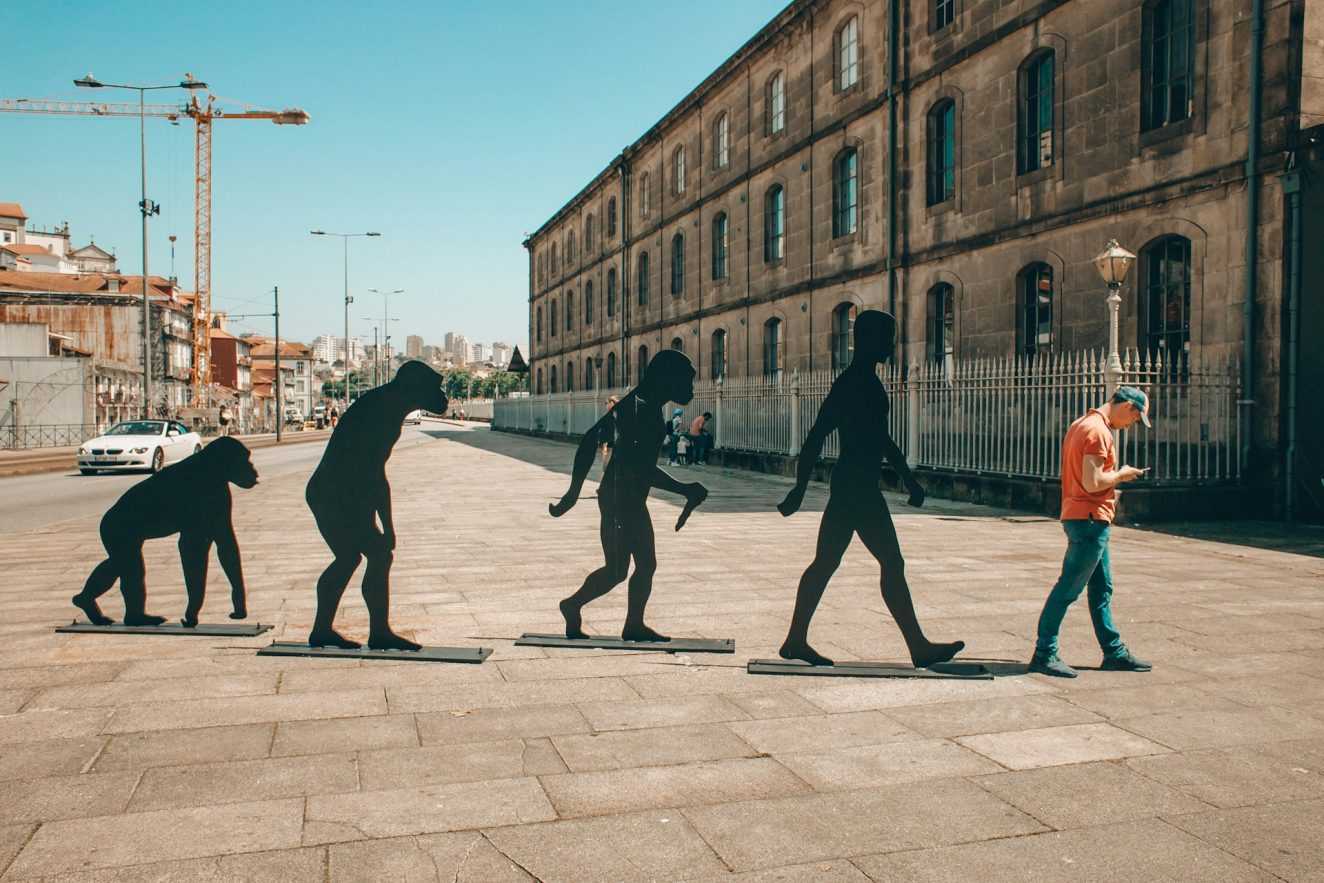Every year, as the temperature dips and the days grow shorter, nature pulls off one of its most stunning magic tricks — transforming the leaves on trees into a kaleidoscope of reds, oranges, yellows, and purples. It’s a spectacle that draws millions of leaf-peepers into forests and national parks to experience autumn’s beauty firsthand. But have you ever stopped to wonder, “How does this happen? What makes the leaves change color?” Strap in for a fun journey into the science of fall colors, and why this process is even more fascinating than you might think!

Leaf Pigments
Let’s start with the stars of the show: pigments. Just like an artist uses different colors to paint a masterpiece, trees use three main pigments to produce their colorful fall foliage: carotenoids, anthocyanins, and chlorophyll.
Carotenoids
Carotenoids are the pigments responsible for the vibrant yellows, oranges, and browns that make trees like aspens, hickories, and yellow-poplars glow in autumn. They’re the same pigments that make carrots orange and bananas yellow. Carotenoids are always present in the leaves, but they’re usually overshadowed by chlorophyll’s powerful green color during the growing season. As chlorophyll breaks down in the fall, carotenoids step into the spotlight, giving us those golden hues we love.
Anthocyanins
Anthocyanins are responsible for the deep reds and purples that grace trees like dogwoods, sumacs, and sugar maples. This pigment is produced in the fall, triggered by bright sunlight and an excess of sugars trapped in the leaf. Ever noticed how the best red colors appear after a sunny day followed by a cool (but not freezing) night? That’s because these conditions boost anthocyanin production. The result? A striking show of crimson and purple!
Chlorophyll
Ah, chlorophyll — the pigment that gives leaves their green color during the spring and summer. Chlorophyll is essential for photosynthesis, the process that allows trees to convert sunlight into food. But when autumn rolls around, chlorophyll production slows down as the days get shorter and cooler. Once the chlorophyll breaks down, the other pigments finally get their moment to shine. The green fades away, revealing the yellows, oranges, reds, and purples that were hiding beneath all along!
Mother Nature’s Calendar
While pigments are responsible for the colors we see, the timing of the fall foliage change is largely controlled by one key factor: the length of night. As the days get shorter and the nights grow longer, trees receive a signal that it’s time to prepare for winter. This triggers a series of biochemical processes that lead to the breakdown of chlorophyll and the eventual shedding of leaves.
In fact, night length is more important than any other environmental factor, such as temperature or rainfall, when it comes to timing autumn colors. Once the nights reach a certain length, the tree’s internal clock starts the countdown to fall.
How Weather Impacts Fall Colors
So, if night length determines when the leaves change, what about how vibrant the colors will be? That’s where weather comes in. A combination of warm, sunny days and cool, crisp nights creates the perfect conditions for a vibrant fall display. Here’s why:
- Sunny days help trees produce lots of sugars, which get trapped in the leaves when the veins start to close off in preparation for leaf fall.
- Cool nights slow down the movement of sugars out of the leaves, allowing anthocyanins (the red and purple pigments) to accumulate.
- Consistent soil moisture also plays a role. Too much or too little rain during the growing season can affect the intensity of fall colors. A dry summer or drought can delay the onset of colors, while a wet autumn can make the colors duller.
In short, the most spectacular fall color displays occur after a warm, wet spring, a mild summer, and a fall with sunny days and cool (but not freezing) nights. Of course, nature doesn’t always play by the rules, which is why no two autumns are ever exactly alike!

What’s the Purpose of All This?
Now that we know how leaves change color, you might be wondering why trees bother to put on such a show. Spoiler alert: It’s not just for our viewing pleasure!
As beautiful as autumn foliage is, it’s part of a survival strategy for trees. The falling of leaves is a way for trees to protect themselves from the harsh conditions of winter. Here’s how it works:
- Trees can’t afford to keep their leaves around in winter because the thin, delicate tissues would freeze in the cold temperatures.
- As the leaves fall, the tree seals off the area where the leaf stem meets the branch to prevent water loss and protect itself from infection.
- For evergreens (like pines, spruces, and firs), the strategy is different. Their needles are coated in a thick, waxy layer, and their internal fluids contain chemicals that prevent freezing, allowing them to hold onto their leaves all winter long.
In essence, autumn is nature’s way of helping trees prepare for winter — all while treating us to a stunning seasonal display.
Where to See the Best Fall Colors in the U.S.
Ready to see nature’s color show for yourself? You’re in luck! The United States is home to some of the most breathtaking autumn landscapes in the world. Here are a few top spots to catch the best fall foliage:
New England
You can’t talk about fall colors without mentioning New England. The vibrant reds, oranges, and yellows that blanket the forests of Maine, Vermont, and New Hampshire are nothing short of legendary. Take a drive along the Kancamagus Highway in New Hampshire or visit the Green Mountain National Forest in Vermont for an unforgettable autumn experience.
The Appalachian Mountains
From the Blue Ridge Parkway to the Great Smoky Mountains, the Appalachian region boasts stunning fall foliage that rivals New England’s. Head to the Smokies in late October for a breathtaking blend of golds, reds, and purples.
The Rockies
If you’re out west, don’t miss the blazing yellows of the aspen trees in Colorado’s Rocky Mountains. The contrast between the bright yellow leaves and the dark green evergreens is simply magical!
When’s the Best Time to See Fall Colors?
Unfortunately, predicting the exact timing of fall colors can be a bit of a guessing game. Generally speaking, the best time to see peak foliage in New England is late September to mid-October. As you move southward, the colors tend to peak later, with the Smoky Mountains usually reaching their peak in early November.
Out west, the high-elevation areas in the Rockies and Sierra Nevada Mountains typically peak in late September to early October.
Remember: cooler temperatures at higher elevations mean the colors will change there first, so plan your trip accordingly!

Next time you find yourself appreciating the kaleidoscope of colors in the fall, take a moment to appreciate the science behind it all. From the pigments hidden in each leaf to the delicate dance of sunlight and temperature, autumn’s transformation is nothing short of magical. So grab a comfy sweater, head out on a scenic drive, and enjoy the beauty of nature’s greatest seasonal display!





